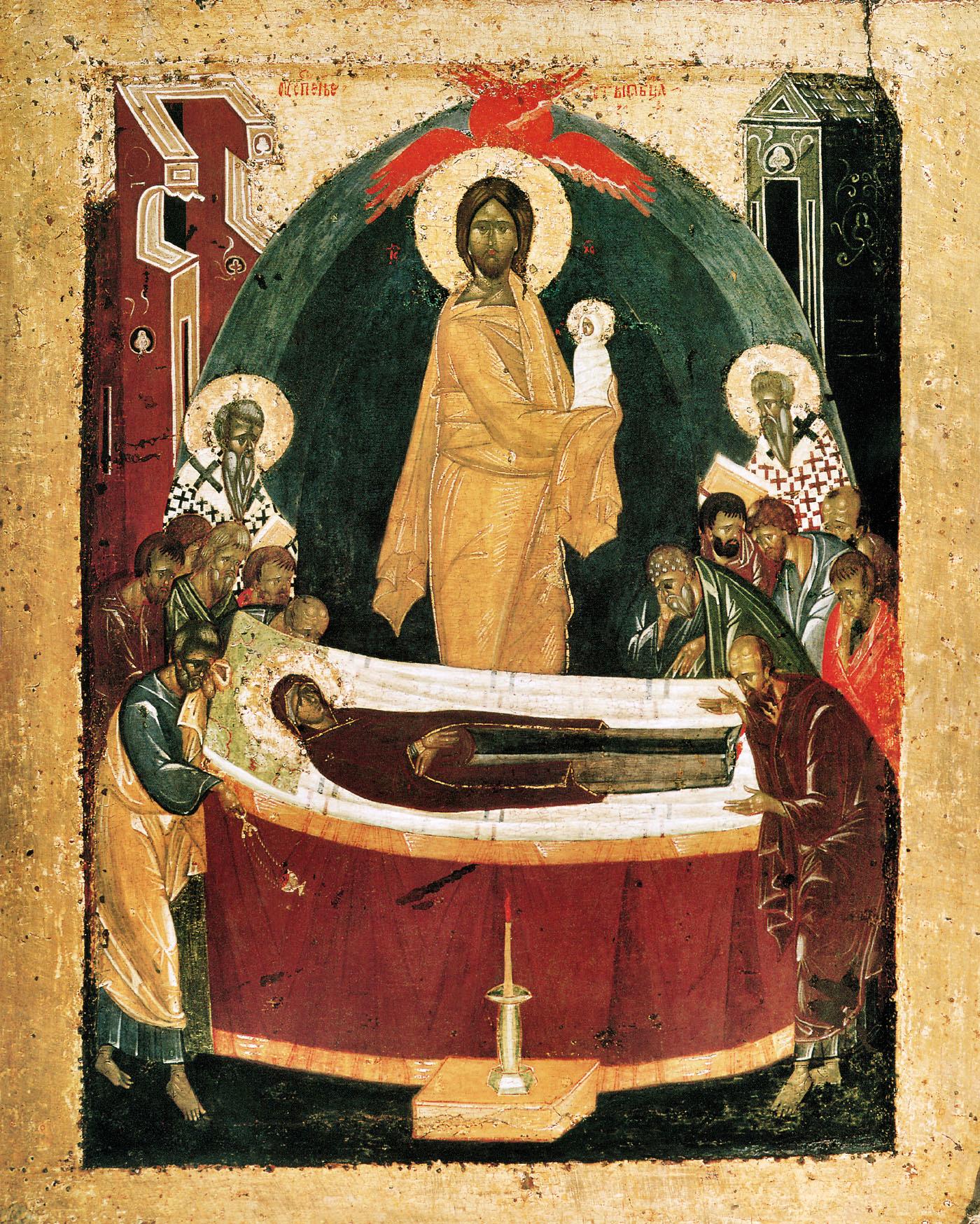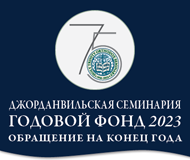News

August 15/28 – Dormition of our Most Holy Glorious Mistress, the Theotokos and Ever-Virgin Mary
06:52 AM
After the ascension of the Lord, the Mother of God remained in the care of St. John the Theologian, and in his absence, she lived in the house of his parents near the mount of Olives. She planted and confirmed the Christian Church by Her presence, Her word, and Her prayers. During the persecution, initiated by Herod against the young Church of Christ (Acts 12:1-3), Most Holy Virgin Mary together with the apostle John the Theologian, in the year 43, moved to Ephesus, where it was his lot to preach the Gospel. She was also on Cyprus, visiting St. Lazarus the Four-days-dead, who was the bishop there, and on the Holy Mount Athos, of which, as says St. Stephen of the Holy Mountain, the Mother of God said prophetically: “This place shall be my lot, given to me by my Son and my God. I shall be a protectress of this place and an intercessor for it before God.”
According to the tradition preserved by the church historian Nicephoros Callistos (XIV cen.), the Mother of God “was of medium hight, or as some say, somewhat taller than medium; had golden hair; quick eyes, as though of olive color; brows bowing and somewhat elongated, elongated nose; flourishing lips, filled with sweet speeches; face neither round, nor sharp, but somewhat elongated; long hands and fingers… In speaking with others, She preserved pious appearance, didn’t laugh, didn’t become indignant, and especially didn’t get angry; perfectly natural, simple, She did not think anything of Herself, and far from being pampered, was distinguished by complete humility. Regarding the garments that She wore, She was satisfied with their natural colors, a fact to this day testified to by Her sacred head covering. Shortly speaking, in all Her actions a special grace was manifest”. (Nicephoros Callistos borrowed his description from St. Epiphanes of Cyprus +May 12, 403).
The circumstances of the Dormition of the Mother of God are known in the Orthodox Church from the apostolic times. In the first century hieromartyr Dionysius the Areopagite wrote about Her Dormition. In the fourth century, St. Epiphanes of Cyprus points to the tradition regarding the Dormition of the Mother of God. In the fifth century, St. Juvenal, the Patriarch of Jerusalem, said to the holy right-believing Greek empress Pulcheria: “Even though there is no narrative about the circumstances of Her passing in the Holy Scriptures, still, we know about them from the most ancient and most true tradition”.
For the time of Her blessed Dormition the Most Holy Virgin Mary once again came to Jerusalem. She spent days and nights in prayer. Often, the Most Holy Theotokos came to the Holy Tomb of the Lord, offered incense there and bowed Her knees. Many times, the enemies of the Savior attempted to prevent Her from visiting the holy place and asked high priests for guards to watch at the Lord’s Tomb. Yet, the Holy Virgin, unseen by anyone, continued to pray before it.
According to the testimony of the byzantine Church historian George Kedrin, the falling asleep of the Theotokos was preceded by somewhat of a second Annunciation: “Once, the Most Holy Virgin, was praying on Her knees at the very place, where Her Son was praying about the Divine Cup, – then, suddenly, Archangel Gabriel stood before Her, and giving Her the sign of victory over bodily death, a branch of date palm from paradise, – announced Her imminent passing, that would come about in three days”. George Kedrin writes that this branch, after Dormition, was carried before the bier of the Theotokos by St. John the Theologian.
On the third day after Dormition of the Theotokos the unconsolable apostle Thomas came to Gethsemane and weeping bowed before the cave of the tomb. Taking pity for his sorrow, the other disciples agreed to move the stone, covering the entry into the tomb, away, however, the Most Pure Body was no longer in it because the Most Holy Theotokos “fell asleep in death for a short time as though for a short sleep, and soon as though from sleep, arose and shook off the death in the tomb as sleep from Her eys, and saw in the light of the Lord’s Countenance eternal life and glory” (From the canon for the feast of Dormition).
Testimonies remain that at the end of the seventh century there existed over the underground church of the Dormition of the Most Holy Theotokos a church, from the tall bell tower of which one could see the dome of the church of the Resurrection of the Lord. Now, there are no visible signs of the existence of this church. In the ninth century, next to the underground Gethsemane church a monastery was built, that was inhabited by 30 monks.
In 1009 the church suffered great damage from the persecutor of the holy places, calif Hakim. Significant changes, traces of which remain to this day, were made by the crusaders. In the eleventh and twelfth centuries, a portion of cut stone, upon which the Lord prayed on the night of His betrayal, disappeared from Jerusalem. Until the sixth century, this portion of the stone was in the Gethsemane basilica.
Yet, despite destruction and changes, the general initial cross-shaped plan of the church is preserved until today.
Wondrous was the life of the Most Pure Virgin, wondrous also was Her Dormition, as the Holy Church chants: “The God of the universe manifests in Thee, O Queen, wonders above the laws of nature. At the time of Nativity, He preserved Thy virginity, and in the tomb He preserved Thy body from corruption” (Canon 1, Ode 6, Troparion 1).






